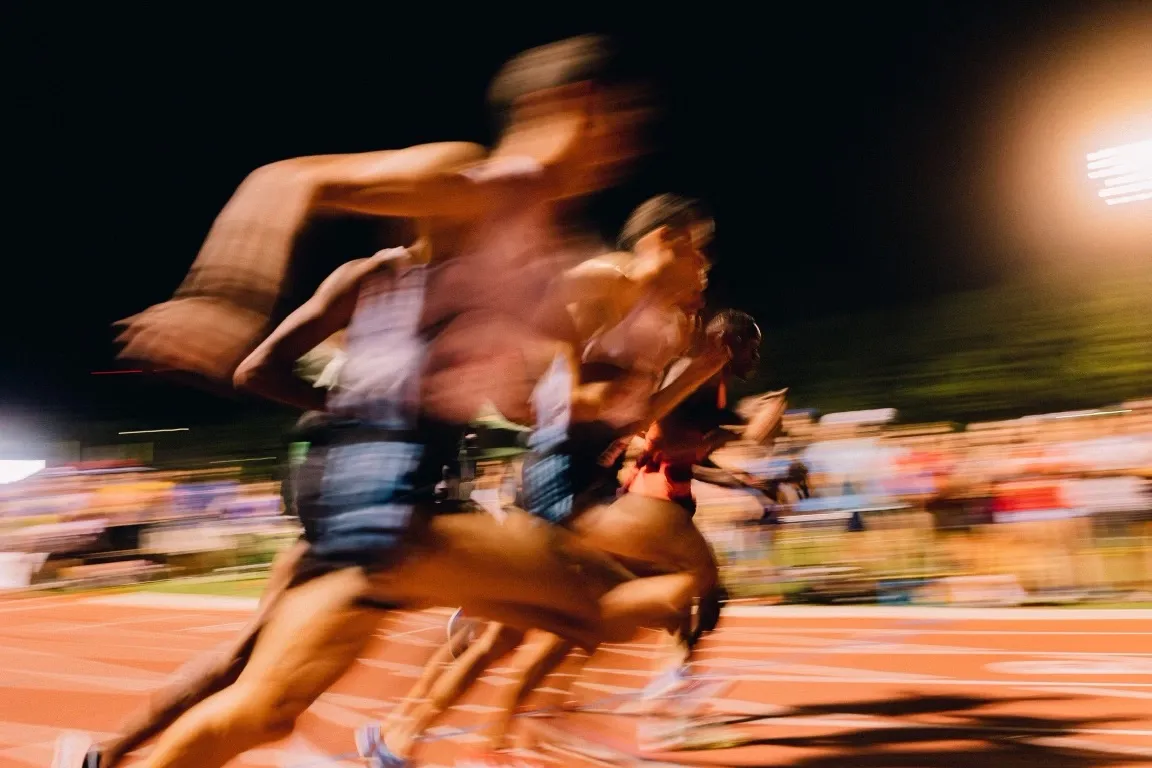
The Peoples’ Race: The Reciprocity That Drives Sir Walter’s Success
There’s one fundamental commandment for filming a race live: you must capture the finish. In Raleigh, North Carolina, at the Sir Walter Miler — the fastest stateside distance race— there’s an added complication: the sheer number of spectators flooding the stands and track. Beginning roughly three hours out from the start of the professional races, thousands descend upon a high school track in the city’s suburban western corner. Under the shadow of the ever-present Carolina pine trees, one corner of this sleepy southern city takes on a festive air.
I am at the top of the grandstand facing the finish line, behind Runnerspace’s “Camera 1,” the camera tasked with giving a panoramic view of the race from start to finish. As the Women’s Elite Race enters the final lap, Nikki Hiltz has made their decisive move. After the Coach’s Mile and Run Club 4×400, I am caught off guard by how fast they surge ahead. As Nikki charged down the backstretch and put distance between themself and what would soon be the previous state mile record, the dispatcher for Runnerspace back in Portland let loose a resigned huff.
“We are working under incredibly challenging circumstances,” I recall him saying, referencing the panorama of hairstyles and hats my camera was picking up. “We’re going to have to switch to Camera 2 for the finish.” Camera 2 faced the finish line directly. Having a direct line of sight of athletes charging down the homestretch can be cool, but its disorienting, and it’s more difficult to see the last gasps for positioning that competitors make in the final few meters.
At the conclusion of the women’s race, Runnerspace had me move the camera up a few rows in the bleachers, so I could get a better vantage point of the finish. As I tried to ascend them, my lasting impression of watching Sir Walter from the highest possible point was the teeming mass of spectators. In their post-race interviews, the athletes talked about the cacophonic cheering – no one could hear a thing. It’s just noise. Noise and motion. With biomechanics blurred and splits swallowed by the soundscape, the race becomes a revelry.
The Sir Walter Miler is always a community effort, even in a sport that is erroneously thought of as individualistic. In simpler terms, it is nothing more than a public rally for Raleigh’s runners, culminating in less than nine minutes of professional racing. In a sport not necessarily known for venues brimming with spectators, it begs the question: Why Raleigh?
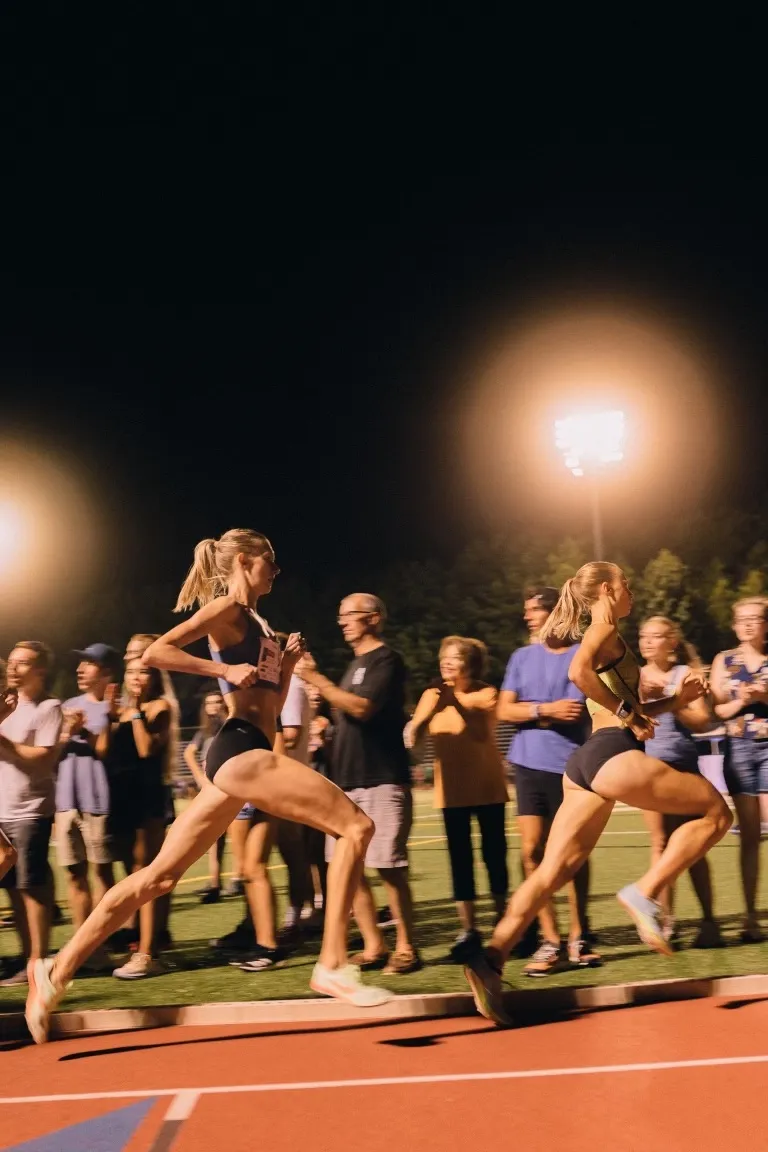
A few days prior to the race, Runologie hosted a Q&A session between Pat Price and Sandy Roberts, the race directors, and some of the athletes who would toe the line later that week.
Eleanor Fulton, who would end up finishing second in the Women’s Pro Race on Friday in a time of 4:23.65, had a curious explanation for what makes Sir Walter unique.
“It’s more of a community event than anything else,” she told them. When I spoke to Eleanor a couple of days after her race, she delved a little deeper into what she meant by this, attributing it first to the care that the race directors put into getting the word out about the race, from their podcasts and the five questions they post on the website to the communication they provide athletes on race week. Second is the way the community responds to Pat, Sandy, and the rest of the team’s tireless work. For one, Sir Walter leans on a handful of families each year to host the pros while they are in town.
“So, you stay with people that love the running community in Raleigh, that are a part of the running community in Raleigh, and then because you have a host family you show up with fans to the race,” Fulton told me, who was hosted this year by local runner and coach Jess Hofheimer.
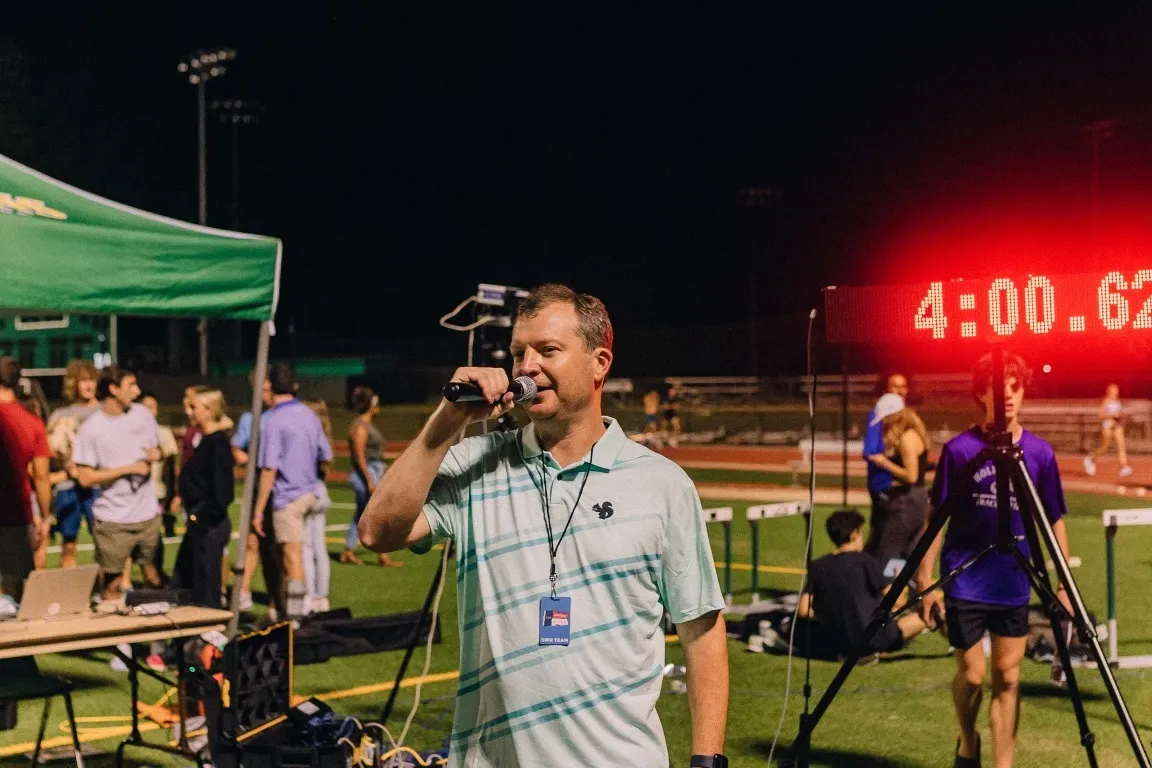
I caught up with Pat to get the lowdown of how this host model got started.
“I’d say what originally started as necessity, due to the fact that we didn’t have money to put the athletes into hotels, quickly morphed into a huge part of our race,” Pat wrote me in an email. “We took the idea from Falmouth [the Massachusetts road race], and turns out the athletes and the hosts loved it. Now we have athletes coming back year after year requesting the same hosts because there is a true bond there.”
One such bond that has emerged through this model is that between Sam Prakel, a four-time Sir Walter participant who ran 3:56.59 this year, and local runner, lawyer, and competitive masters-level road racer Tim Meigs. Sam has stayed with Tim for the past two Sir Walters.
I spoke to Tim to get the lowdown on the hosting experience. Tim has hosted athletes six times for Sir Walter, including four this past year.
“Having a comfortable place to sleep is number one,” he told me, explaining that it’s essential for runners to have a comfortable, private space to get their rest. His children are typically off to summer camp by the time Sir Walter comes around, so he can fit two athletes into their bedrooms, another one into the guest bedroom, and then a fourth on a queen-sized blow-up mattress next to the pool table in a bonus room. To make the blow-up mattress comparable to the other beds, he puts a foam layer on top of it. “I slept on it myself just to check it out and it was comfortable,” Tim told me.
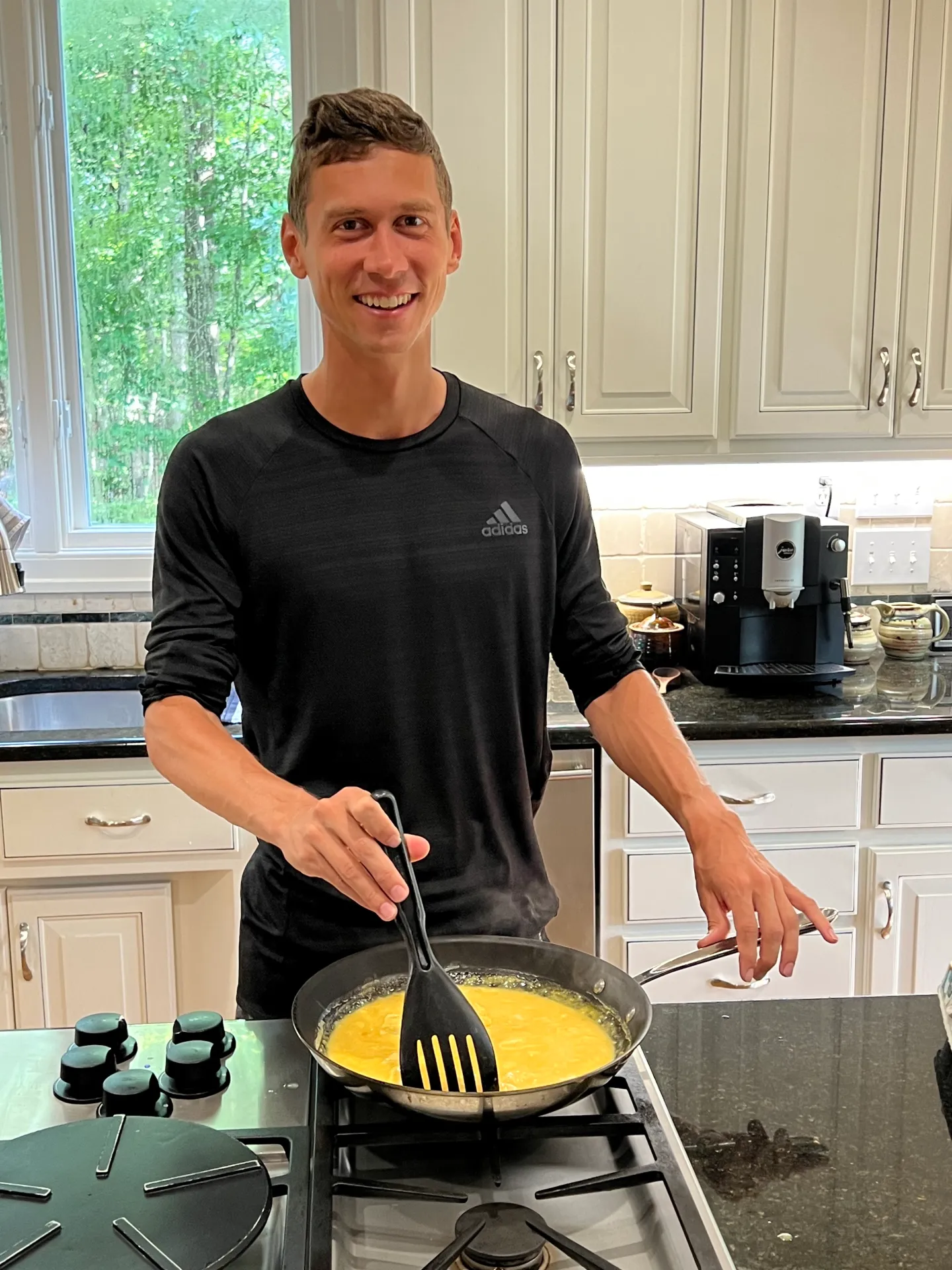
In addition, Tim makes a now famous breakfast for the athletes the day of the race. He said that the biggest difference between hosting one athlete and hosting four is making “a little bit more pancake batter in the mornings.”
According to Sam, the pre-race breakfast is becoming one of his favorite Sir Walter ‘traditions’. “It’s much nicer than waking up in a hotel and having to figure out breakfast on your own like at any other meet.”
It was interesting to talk about Sir Walter versus “any other meet” with Eleanor and Sam, two multiple time Sir Walter attendees who are just coming off a season of championship racing in Eugene, Oregon.
Eleanor described the typical travel experience for a meet as consisting, to paraphrase, airport, Uber, hotel, Uber, track. Sam echoed this – Sir Walter, to them, is characterized by its warmth.
“So many meets I go to…you kind of show up, you don’t really know what’s going on, and that can cause some anxiety,” Sam told me. “But I always feel really well taken care of at Sir Walter, and they really do know how to put on a race.”
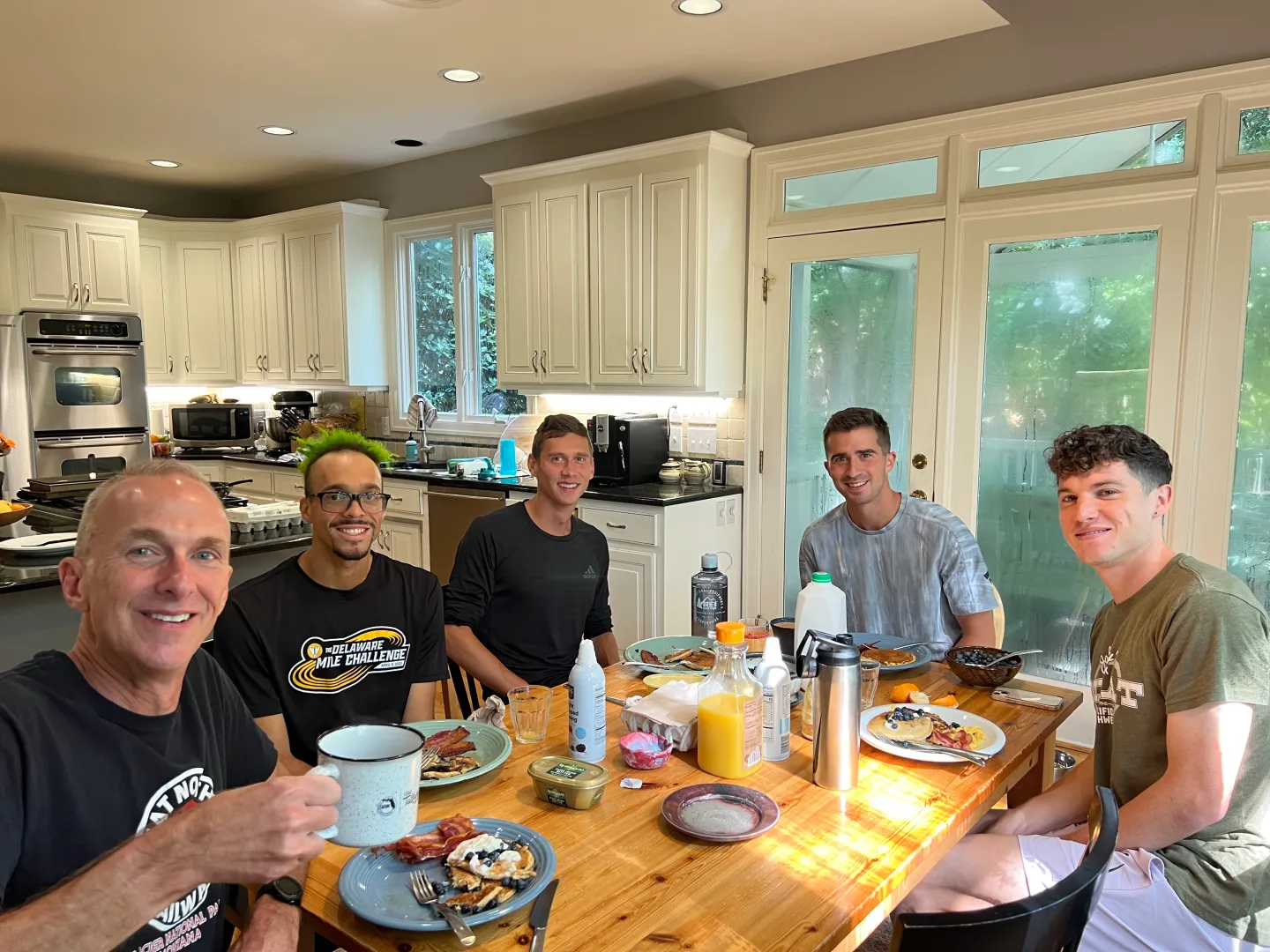
In addition to the care that the meet directors put into the race and the hosts put into nurturing their athletes, the other element of Sir Walter as a ‘community event’ is the psychic benefit of the crowd on race day. This is also something that distinguished Sir Walter from other meets for Eleanor and Sam.
“It does make a difference when you’re running down the homestretch and the screams of the fans, the loud crowd support, can drown out some of the pain you’re feeling,” Sam said.
Or, in Eleanor’s words: “That homestretch is crazy!”
Sam described to me how at larger meets, such as USAs, he can sometimes feel like “just another hip number on a starting line,” and how between finishing a race, entering into the mixed zone, and cooling down in another secured, sequestered area, a whole hour passes before he might get the chance to interact with fans. Eleanor said that at a larger facility like Hayward, you can kind of be unaware of the fans. You might glance up and see that the grandstands are empty, full, or somewhere inbetween, but it’s nothing like Sir Walter. Both athletes described not only being aware of the fans the entirety of the race, but also as soon as it concluded.
“As soon as I cross the finish line and as soon as I’m still catching my breath, I’m interacting with fans and the hype around the race is still there, it’s still immediate,” Sam said. “It’s a unique thing to get to do that.” And somehow, the meet that’s unique for breaking down barriers between professional athletes and runners of all kinds is also uniquely fast.
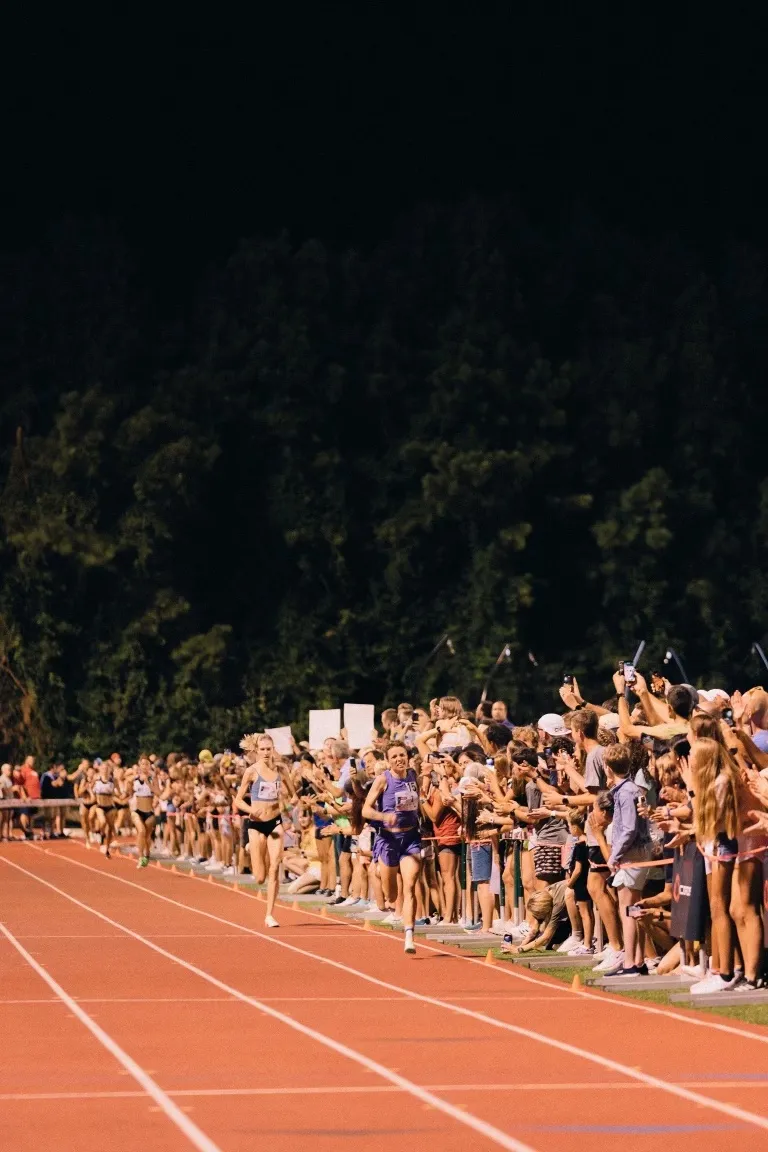
Consider this: the Sir Walter Miler has set the record for most US men under 4:00 in the mile in a single race (2018) and the most US women under 4:30 in a single race (2021). It is arguably the most competitive professional distance meet on the east coast and, at least since Sports Illustrated wrote in 2015 that “Sir Walter Miler provides the best glimpse of future growth for American track,” we’ve seen short, electric, community-oriented track meets pop up across the country that emulate Sir Walter. Sir Walter, in the eyes of this biased local, is the most electric track meet you can find in the United States.
It’s electric because it is driven by reciprocity. Athletes give a substantial amount of time throughout the week to the community, from signing random high school kids’ shoes during their pre-meet workout all the way to waking up with the sunrise the day after the race, even if they stayed up late into the night after the race at Raleigh Brewing.
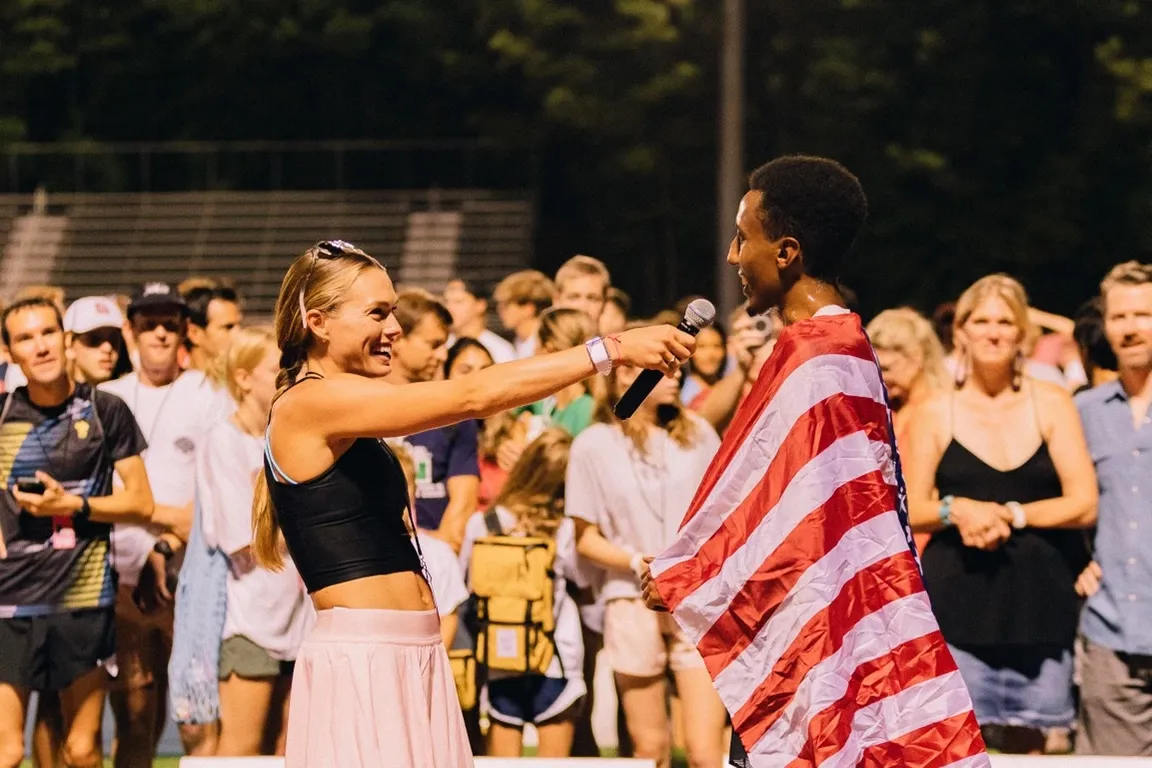
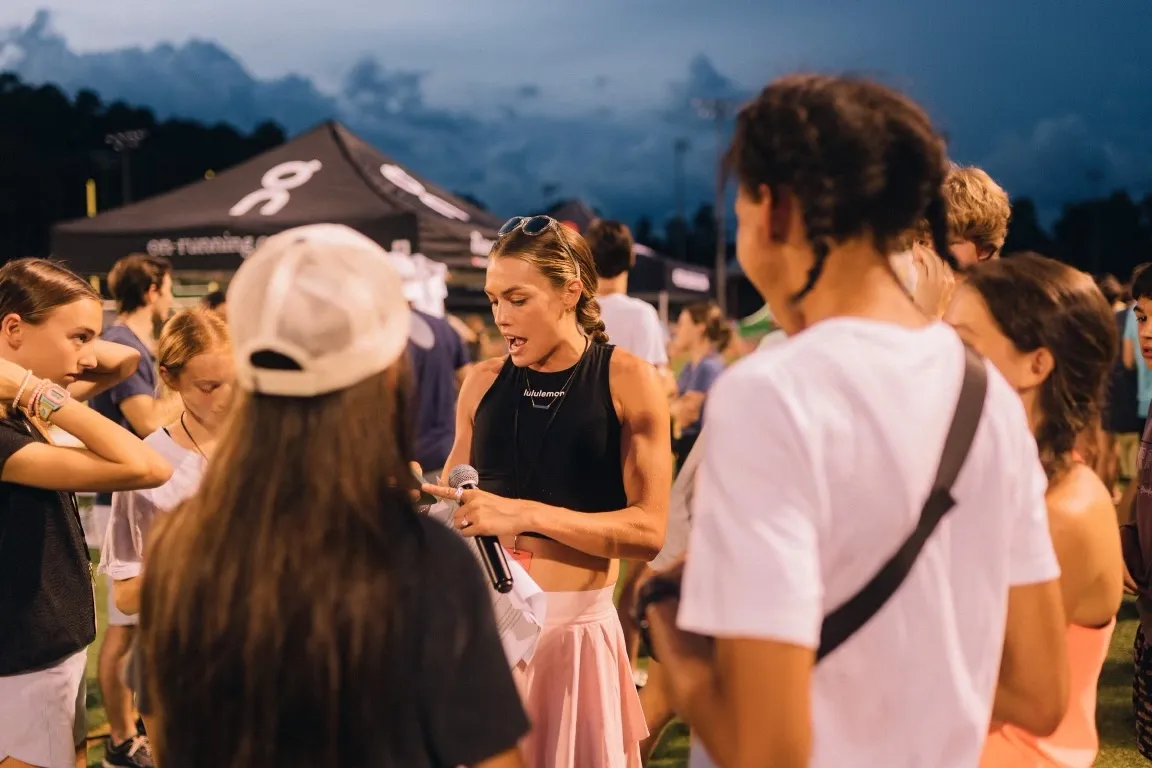
Raleigh’s runners pour their hearts into race week in return. They offer their homes up and direct the pros to the best routes for a shakeout. They break the track in with the Run Club 4×400. Heck, they even offer up their homes.
Raleigh has done this since 2013, when Sandy and Logan first lined up 1609 meters away from a dream on Cardinal Gibbons’ track. Nine years later, there are athletes from across the world that have gotten to truly take a piece of Raleigh home with them.
For Eleanor, who swears she told me this not only because I’m a Runologie employee, her friends back in Portland will hear about how this small city’s running store sells Saysky, how its runners gather over beers or LaCroix to go over results from community track meets, and how its little race that has an energy that even races in Eugene in New York City are no match for.
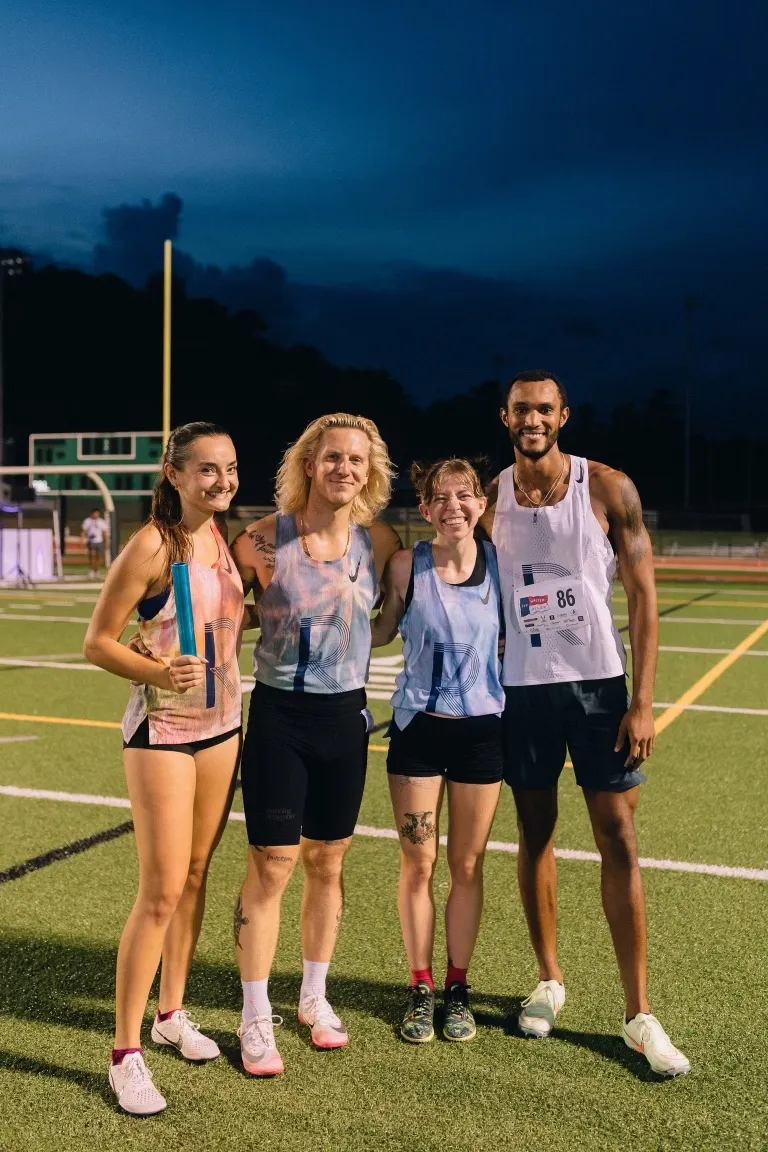

For Sam, who said Raleigh is starting to become a second home in August for him, it’s quite simply the kindness that he tells his friends back in Seattle they have to trek down to Raleigh to experience.
This is also my fourth Sir Walter. At this point, it’s this reciprocity, generosity and kindness, that I notice most about race week. The memories burn into my mind from the start of 2022, of course, with Nikki and Yared’s historic performances. However, the images in my head are not so much these pros crossing the finish line. No, it’s Nikki doing their victory lap with NC State student-athlete Sarah LaTour’s Pride flag. It’s Yared taking forever to get over to the Runnerspace interview because he’s walking down the homestretch graciously accepting every high school runner’s request to get a selfie with him. It’s Olympian Colleen Quigley interviewing local legend Andie Cozzarelli. It’s the little girl about 50 meters from the finish, eyes glued to the racers, who thinks that this is the norm for track and field. It may not be, but it’s the standard.
In other words, as Tim told me, it’s one of the best weeks of the year, and it’s a reason to get up and run the next week: “How seriously [the athletes] take it, how dedicated they are to it, and how hard they work – it inspires me in my running,” he said.
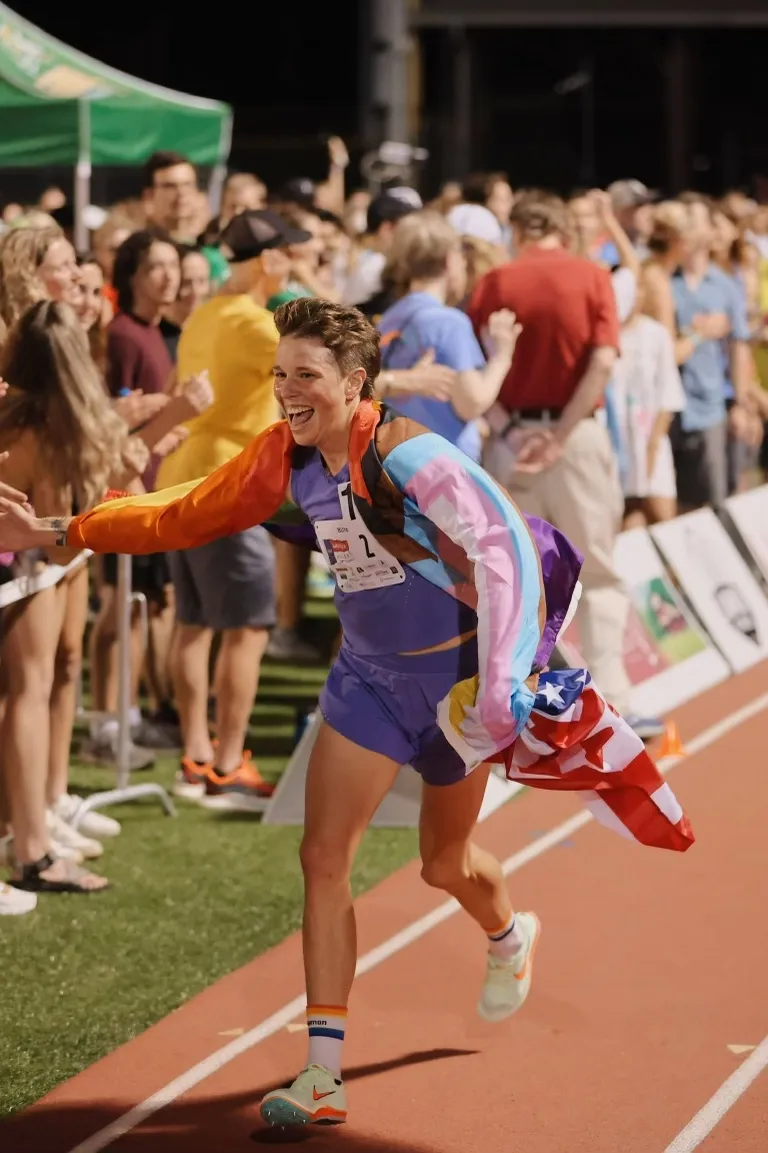
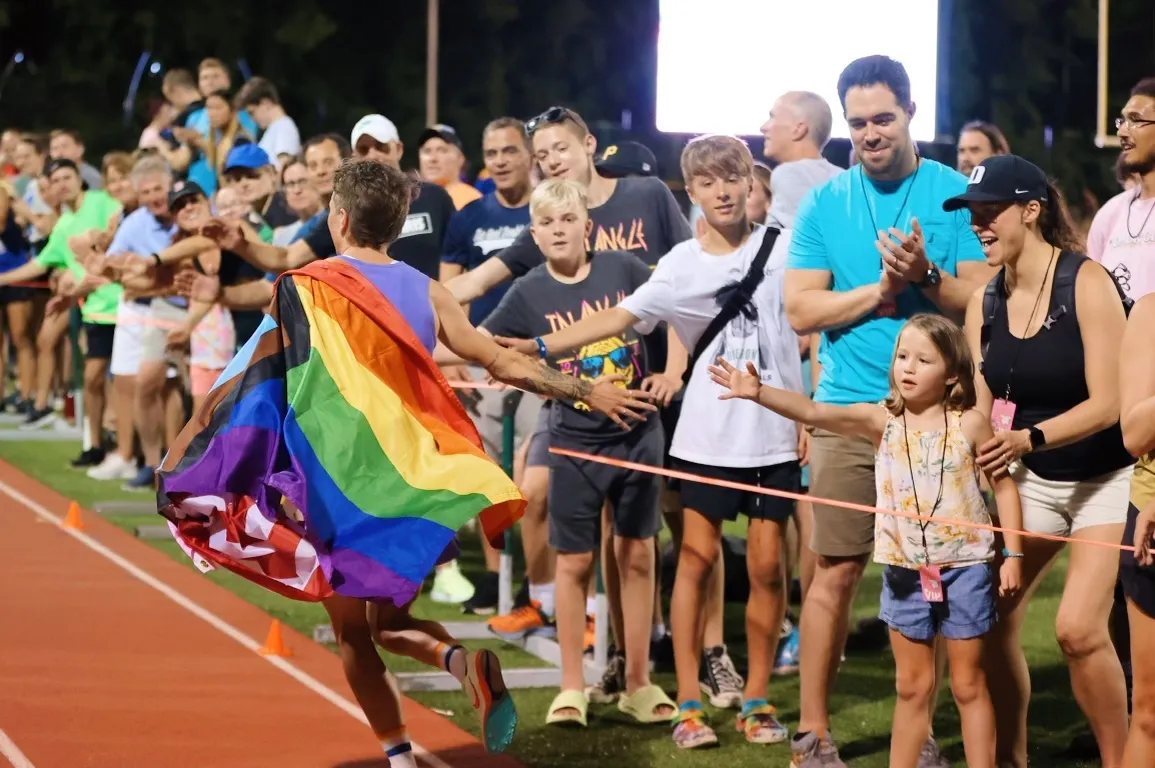
Athletes know that the predictability of the race and reliability of its leadership will make for fast times. We Raleigh runners recognize that this event is a celebration of this thing we cherish so deeply. And all of us, young, old, fast, slow, professional, and amateur, are invited to the revelry.
The meet’s current home and birthplace is a high school track on Raleigh’s western boundary. For much of its tenure it has taken place on a small NCAA Division III women’s college track. These are not hallowed grounds like Hayward Field in Eugene, or even NC State’s Paul Derr Track, just a few miles closer to downtown. What’s more, Pat and Sandy both work in real estate. The race is a passion project. The team of volunteers behind the race has, on any given year, been a smattering of high school and college track superfans, friends, and family. The most enduring sponsors and supporters are local doctors and small businesses. Even corporate partners, such as On Running, are not so much corporations when they come down to Sir Walter. Rather, On is Sam Montclair, the local rep whose 20 mile long runs down the American Tobacco Trail are the stuff of local lore.
The race is, on some level, exceedingly small, familial, and intimate — it is a manifestation of the incredibly close-knit and dedicated Raleigh running community. That does make it a community event. That’s also what makes it a success.
